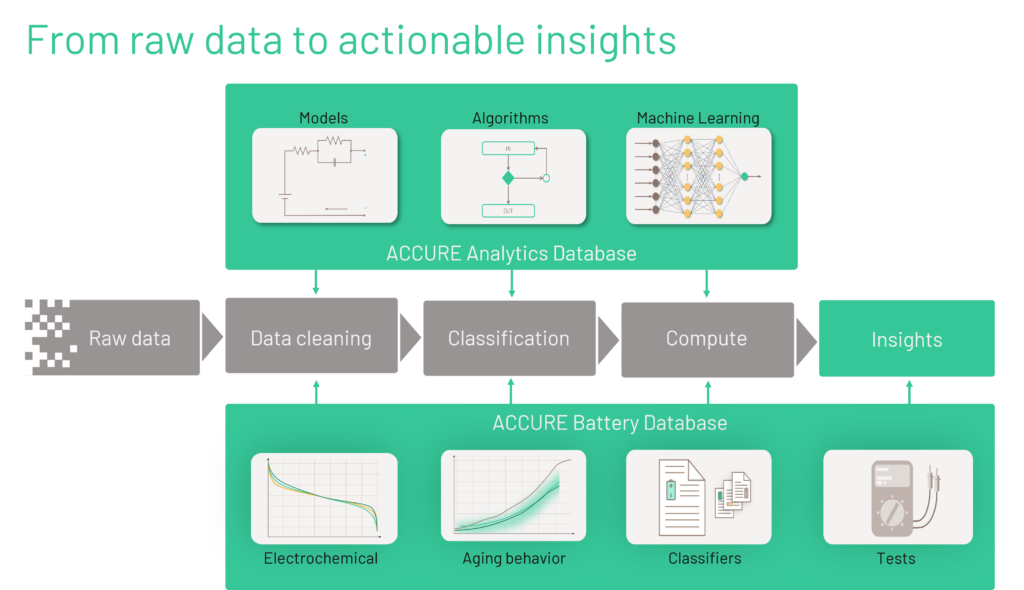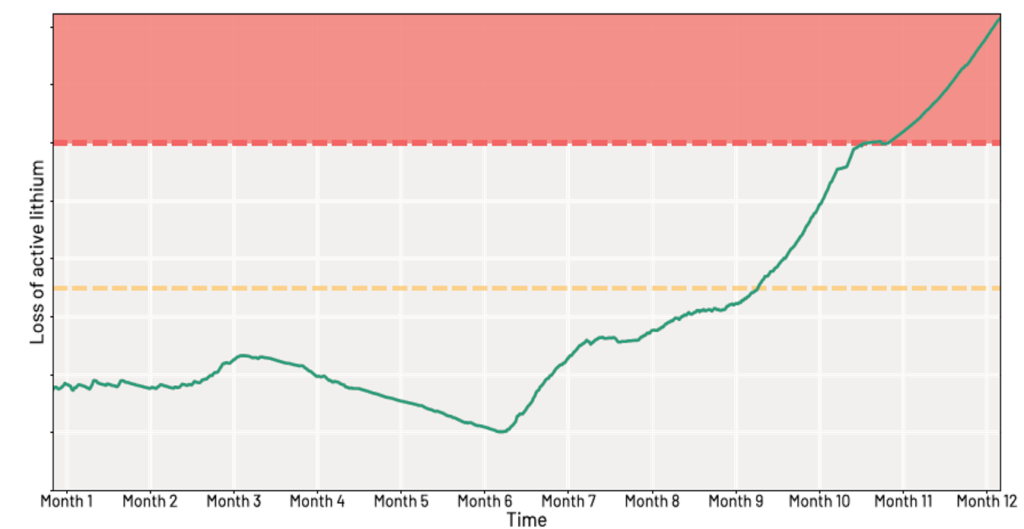
The incredible success story of LIB…
The energy and mobility world are accelerating on the path to decarbonisation. One of the most important assets for this transition are energy storage systems, particularly lithium-ion batteries (LIB).
To put the incredible success of this young technology into perspective, the annual production capacity of the recently announced Volkswagen SalzGiga factory (40GWh) in Salzgitter, Germany, will be larger than the world’s total LIB demand in 2013. Just let that sink in for a moment.
There are many reasons for the dominance of LIB in the energy and mobility world. One major advantage over other battery technologies is the flexibility. LIB cell types have been successfully used in electric cars, ships, buses and large-scale storage systems, allowing for synergies and scaling effects. But certainly, the strongest drivers of LIB were the stark increases in energy density and the (until recently) continuously falling prices.
…and why we need to talk about safety
The focus on ever-increasing battery energy densities and cost reductions, combined with a dizzyingly fast ramp-up of global production capacities has brought LIB into countless applications. As more industry players enter the market and deploy at a rapid pace, safety incidents also increase. Battery fires and explosions have become a regular sight in the news and on social media.
Three events that caught worldwide attention:
• In 2019, a cell failure in a battery system at an APS facility in McMicken, Arizona, led to a thermal runaway and ultimately caused an explosion that injured several first responders.
• Between April 2021 and May 2022, over 80 electric buses and 4 bus depots burned down across France, Germany, and the UK.
• Since 2020 thousands of electric scooters have caught fire around the world – some in private homes, some in warehouses.
While everyone in the industry agrees that battery safety should be the top priority, the reality is that the expectations and pressures relating to growth create conflicting priorities, in addition to the pressures to commercialise new, innovative technologies. Higher energy densities, for example, inevitably mean more energy that can fuel the fire during a failure.
So, what are our options to prevent critical failures and make batteries—and clean energy—as safe as possible?
Cloud-based analytics
A proven strategy to improve battery safety is the use of cloud-based analytics. By detecting critical faults at an early stage using more sophisticated and modern analytical methods, battery operators can act before any damage is done.
Diagnostics based on existing field data streams can be applied to any LIB system without the need for any product modification.

The concept of cloud-based analytics is presented in Figure 1 above and summarised in the following.
Step 1: Data acquisition
The starting point for all cloud analytics is the continuous stream of measurements from the BMS (“raw data”). This raw data is passed to the communication bus and then pushed to the cloud where it can be
stored, consolidated, and analysed by the battery operator or a third-party service provider.
Step 2: Data pre-processing
To leverage the raw data, extensive data cleaning needs to be performed. For one, outliers and systematic measurement errors in the raw data need to be detected and flagged as such, to avoid false interpretations. But, more generally speaking, every BMS has its own (systematic and statistical) errors and idiosyncrasies that need to be understood to make sense of the data. If you plan to evaluate a cloudbased analytics solution, then make sure it works with any kind of input data and is able draw the right conclusions from every new data point. This pays off in terms of scalability for diverse BMS’s.
Step 3: Fault detection
Fault detection algorithms scrutinise the battery data to check for potential faults. A fault can be identified through changes in primary parameters such as voltage, temperature, and current or in secondary parameters such as impedance, a shift in the open circuit voltage curve, or the amount of active lithium in each cell. To track secondary parameters, model-based algorithms, which consider reduced order
physical-/chemical processes through mathematical equations are used. Identifying and tracking specific patterns in these parameters for the millions of similar cells, which are in operation, enables these
algorithms to find anomalies before they become dangerous.
Step 4: Reporting
If a battery is identified as dangerous by the cloud analytics, automated warning notifications are generated to allow the operator to act – by bringing the system into a safe state and arranging for maintenance or replacement.
A technical example of one of 20 safety indicators
There are many ways field data can reveal safety-critical battery behavior. In fact, there are at least 20 safety indicators a robust cloud analytics solution should track multiple times per day.
They are based on electrical, thermal and mechanistic models empowered by machine learning. The algorithms mirror electrochemical relationships and processes, revealing insights about the internal states of the battery.
In Figure 2, an analysis of the loss of lithium inventory, a process closely linked to lithium plating, is presented.

Lithium plating, where metallic lithium gathers on the outside of the anode, has been a major headache in the LIB world for decades. It mainly occurs when a battery is charged with high current rates at low temperatures but can also happen under “normal” operating conditions. Not only does it quickly degrade a battery’s capacity, but it can also become a safety threat by forming metallic dendrites and
triggering side reactions such as gassing.
It manifests itself in a decrease of the lithium inventory which is no longer available for the main reaction.
Cloud-based safety algorithms, among other things, must closely track the loss of active lithium to accurately predict safety critical events.
